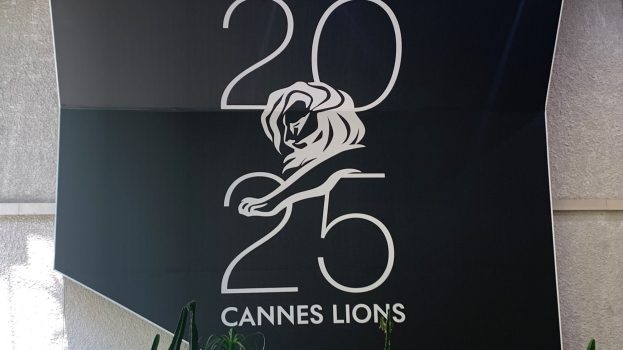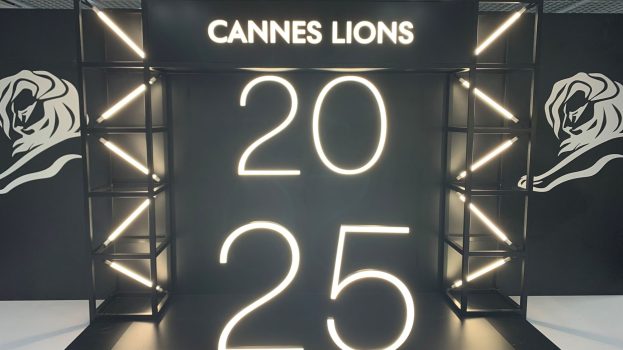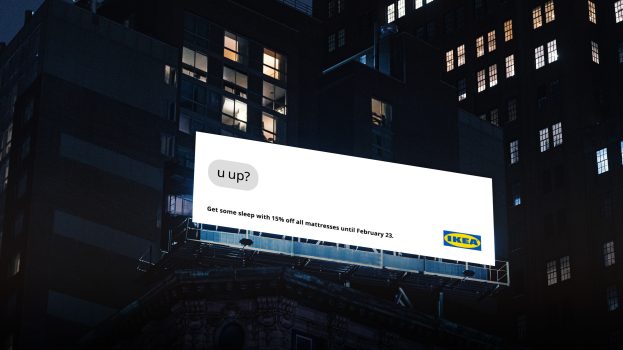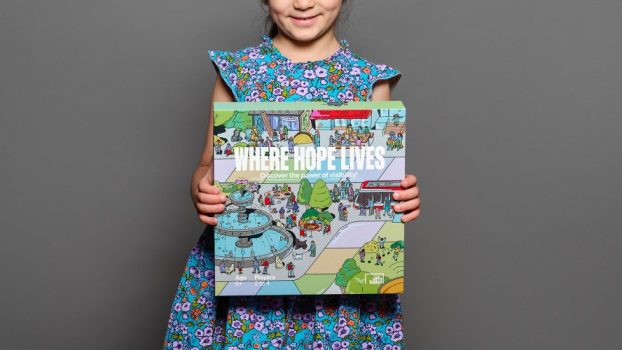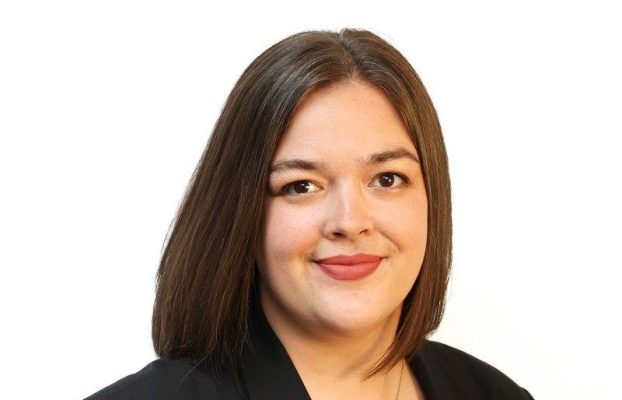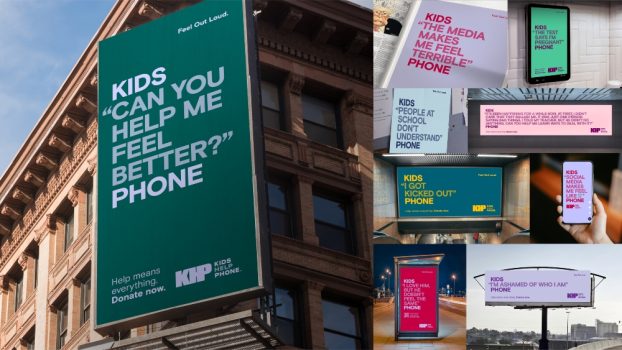In less than two years, Grand & Toy president Garry Wood has changed the way the company does business – altering its mandate, restructuring it into five different business units (technology, interiors, office supplies, digital imaging and services) and undergoing a comprehensive rebranding effort. His goal is to make the company, founded in Toronto in 1882, more than just a supplier of commodities.
Wood envisions Grand & Toy as an ideal strategic partner for its larger corporate customers, which it will tackle through increased reporting on cost-savings and more strategic buying (by combining large orders to drive down suppliers’ prices). It is also aggressively going after small businesses for the first time, introducing Grand & Toy Small Business Accounts and transforming its once-tired retail locations into vibrant ‘small business centres’ that house products like web-hosting software and digital imaging solutions, as well as educational/networking seminars. Since the seminars began last spring, they’ve been attracting an average of 40-50 attendees each – quite significant in the small 3,000-4,000-square-feet stores, of which there over 40 across Canada.
In a nod to the ‘small business centre’ transformation, this year’s back-to-school campaign integrated back-to-work messaging, too. For the past two decades, consumers have represented just 10% of Grand & Toy’s business, and the company plans to focus even more on B2B in the future.
Also to appeal to small and medium-sized businesses, Grand & Toy will begin partnering with large firms in service fields like human resources and accounting, using its clout to negotiate bulk prices for its smaller customers.
Last year Wood brought in a new marketing VP, Kevin Edwards, who joined Grand & Toy after a 10-year stint at Jamieson Vitamins, where he led innovations such as the branded reality show Slim Down TV. The company also brought Toronto-based Publicis and its wing Ove Design on board last year to help freshen up its image and communicate its new offerings. The resulting brand template features the use of bright, vibrant colours, a new logo featuring G&T in a green circle and the tagline ‘Performance Enhancing Offices.’ A general awareness execution features a funky young professional jumping up in the air and reads: ‘Change is in the air. Find out what’s new at Grand & Toy.’
The first campaigns after the rebranding began rolling out early this year, and included an ‘Office Makeover’ contest to highlight its interiors business. Grand & Toy has in-house office design services that it offers for free to companies buying new office furniture. The services have been available for years, but research showed that there was very little awareness of them.
All communications are tagged with grandandtoy.com, where the company does 62% of its business, generating over $400 million in annual revenue. This fall, Grand & Toy plans to beef up the site even more.
Wood is so confident in the new model that he anticipates the business will double over the next three to four years. Strategy talked to Wood and Edwards about the process of overhauling an iconic 125-year-old company.
What prompted you to rebrand?
GW: I was hired nearly two years ago to see how we could bring more value to our customer base and create shareholder value. I realized that our customers were really looking for a lot more than just pens and paper. They were actually looking for more value – something that would give them long-term benefits versus just another saved penny or two on a blue pen. I quickly realized that this industry has not delivered on what the customer base is really asking for.
KE: Our brand identity had not really been updated in about 30 years. We were still using a reiteration of a logo that was designed in the early 1900s. It was about signalling change, putting a fresh face on Grand & Toy, but also indicating that there are robust offerings that customers were not aware of. We’ve broadened our product line, we’ve updated our e-commerce platform. In general, we’re signalling to customers that there are a lot of great new offerings available at Grand & Toy.
What were some of the challenges surrounding the rebranding?
KE: Anytime you look at an organization that’s over 125 years old, one of the first things you must do is talk to your customers and see what it is they value, and why you have such loyal customers. Our customer base is intensely loyal. We found, more than anything, a willingness to not put us in a box, to want us to succeed and to go into different areas they felt we had a right to be in. In particular, into interiors, which we’ve been in for years, but the awareness wasn’t there.
Why did you select Publicis, and how has that partnership been working?
KE: Excellently. Not only Publicis, but their branding division, Ove. They’ve really helped us tie it all together and guided us through the discipline of rebranding an entire company – this theory of a branded house versus a house of brands. We’ve had a lot of acceptance internally, and that’s been through the leadership of Publicis and Ove.
Was the introduction of programs like the Small Business Success Seminars a result of this research and reshifting?
GW: Yes. That’s one aspect of another plan. In Canada, there’s a definite need for a small/medium business person to find a variety of services. And we want to provide all of that in a one-company, one-location situation, whether it be HR issues, financial advice or helping them find tax planning or legal services. Eventually we’ll be coming out with a suite of services under one brand that will help them get all those questions answered.
What do you envision this looking like?
GW: The concept is to partner with large or medium-size law firms, as an example. Think of it as small equals big, if you wish. You may be small, but in the community of many small businesses under Grand & Toy, we’re going to go out and find the best people possible to help you.
Just because you’re small doesn’t mean you have to deal with the small one-man law firm. Because we want to be your customer advocate. We’re going to treat you like a large customer, we’re going to go out and negotiate on your behalf collectively in a community environment.
When will campaigns to support the new business services launch?
KE: We’re going to begin within the next quarter, not only testing but rolling out services across Canada. Some things you need to test, and other things, through research, you know your customers want.
I’ll give you three areas we’re going to focus on: HR services; couriering is something we need to offer for our small business customers to create a bit of a destination; and we’ve been very successful in rolling out our website hosting product.
What are you doing to appeal to your large-enterprise customer base?
GW: Right now, this industry is a seller of commodity products. It’s all about the price of the pen. We are moving toward being a partner of strategic sourcing. This is very important, because there are hundreds of thousands, if not millions, of dollars to be saved by customers across Canada – large-enterprise customers.
This is going to really resonate with the strategic sourcing professional out there. If you think about the 1980s, the up-and-coming person in any large organization was the IT professional. Today it’s the strategic sourcing professional. They have an opportunity to save the company a lot of money. Not only in the way they buy, but also through improved processes.
We believe there’s probably 10 or 15% of costs that are not being truly managed at the large, strategic level. And, depending on the size of your company, this could be worth one million dollars plus. If you were to ask these companies how much they spend on office supplies, printing, shipping and receiving, and on cheques on accounts payable, they couldn”t tell you. Because no one sees it, no one truly manages it rigorously. Our customers – our research is showing – are asking us to help them source cheaper.
There are many customers out there that are buying a variety of these services from many, many suppliers. Now you have four, five, six trucks rolling into your business. That is very costly, and not very friendly to the environment, versus having one vendor, being able to reduce the number of cheques and the number of trucks, and truly have a partner to bring more value to that customer.
The real cost savings is not in the price of the pen, but everything that goes around it. People are starting to get this.
Do companies have to commit to concentrating their business with you?
GW: No. We want to earn your business. Each situation is different, but the concept ‘you will save money by concentrating your purchases at Grand & Toy’ is one that we will guarantee, year over year.
Let me explain the Big Blue Pen concept: Right now, when customers go to a RFP, they will decide that they need a quote on 20 different types of pens. But by doing that, they limit our ability to be a strategic sourcer. Our option is to say, ‘Listen, you need a good black pen, blue pen, green pen or whatever, but limit it to that and let us go out and combine your order with other customers’ orders and actually buy the best black, blue, green pens that we can find at the best price, by amalgamating that demand.’ So one month it might be Bic, one month it might be Stadler.
The point is, by letting us be truly strategic partners, we’ll drive the price down and guarantee the quality of the pens, versus just providing the 20 pens that you asked us to quote on.
How do you envision the strategic sourcing going into market? Will clients work with account managers?
GW: Yes. We have account managers that take care of the large and enterprise customers. We are also pioneers in the reporting of usage, and because we’ve been around 125 years, with over 110,000 corporate customers across the country, we have a databank of best practices. So we can share ideas and ways to save money. Because, quite frankly, what someone’s doing in B.C. might be a lot better than what someone’s doing in Moncton, New Brunswick.
So further down the road, when a client calls their account manager to order pens, they could also say…
GW: Let’s sit down, take a look at all of your procedures, and see what we can do for you by sharing some of these best practices.
We’re also the largest distributor and re-seller of office furniture in Canada, so let’s take a look at how we can help you with that. Let’s take a look at how we can help you with printing and digital imaging and all of your paper needs. So when you combine all of those, you’ll be saving, but you’ll be spending more with Grand & Toy.
The real savings are on the process. For example, a large corporation wants to redo a floor. They go out and hire a designer. The designer sits down and designs the floor layout and goes out to public tendering on the bid of the actual furniture.
We actually offer the design service for free. So why do you want to spend hundreds of thousands of dollars to do that when you can do that with us for free? We have [design] offices out west, in Quebec and in Toronto.
There are obvious opportunities to save substantial dollars that companies just don’t know about. So we have to go out and educate. We’re going to be doing that as we go forward.
How are you going to go about educating people?
GW: Some of it is already in place, and some of it will have to be designed going forward. The ones in place right now are the efforts through our sales force.
What are the goals of the new strategy? Is it about increasing your revenue and taking a bigger chunk of the marketshare?
GW: Well, no. Obviously that’s the driving force, there’s no doubt that we want to grow. It’s great selling a lot and making money, but it’s even better when your customers are satisfied. Grand & Toy didn’t get to be 125 years young by not having really strong customer loyalty. It’s a combination of loyalty and being a leader in an industry that needs to be changed, because the demand is out there.
How has Grand & Toy’s structure been affected by this shift?
GW: We’ve completely restructured the organization. We’ve set ourselves up into five business units. We’ve articulated. We’ve hired. We’ve spent hundreds of thousands of dollars to bring these people in. The majority of them are not from the traditional office supply/ stationery business. They are experts in their specific fields, and we’ve brought them in to lead the charge. They’ve hired a bunch of support staff. This is a serious push to transform not only Grand & Toy, but the industry itself.
Has the recent hiring spree affected the marketing department?
KE: Yes. We’ve added about 10 people. [Almost doubling the department to its current staff of 22].
What percentage of your business is e-commerce?
GW: 62%, approximately, depending on the month. We’re in the top five e-commerce businesses in Canada. The average e-commerce play for most companies is around 10-15%.
How have you built it up to that level?
GW: In the past, we’d go to our customers and show them e-commerce solutions that would save them money, time, effort and give them clarity. So we basically pioneered e-commerce around 2000, and we came out with a cost-saving system that directed invoices to specific departments. As a result, we drove a lot of efficiencies in the number of cheques that were being issued.
Since 2001, we’ve tripled our B2B business. Those e-commerce systems for the large enterprise businesses are all customized for their particular needs. So we’ll go in and design a website for them that only their employees have access to. Customized interfaces. It’s a direct link to us with next-day delivery.
How do you plan to protect this e-commerce business and help it grow?
GW: By responding to the customer’s needs. There’s no better way. If the customer wants something and you’re not giving it to them, you’re likely going to lose them. The reverse of that is that if you’re listening to them and trying your best to deliver something that they want, the loyalty base is there.
We’re taking that traditional business model of selling a commodity and flipping it on its head. We’re moving from a commodity-based model to one that’s more of a professional-service provider approach, and it’s going to be measured not only on the price of the pen, but also on the value of the service rendered.
KE: We’re launching a complete new search engine capability which is going to be the industry standard. It is going to be spectacular. The ability to upsell, suggest products – to move customers to products that definitely suit their needs by looking at what their histories have been and pointing them in different directions.
When do you expect that to launch?
KE: The latter half of Q3, so we’re going to begin our beta testing, and it will likely be ready in September or October. We’re going to do some degree of communication focused around that as a separate piece.
It’s really going to be not only the standard in our industry, but also the standard in many industries. We’ve managed to convert more than 60% of our customers’ purchases to online, so it was important that we develop the best platform possible. If they’re used to the catalogue, we had to make sure that the catalogue translated online just as well.
Where do you see Grand & Toy in 10 years?
GW: Our goal is to double our business in the next three to four years.

